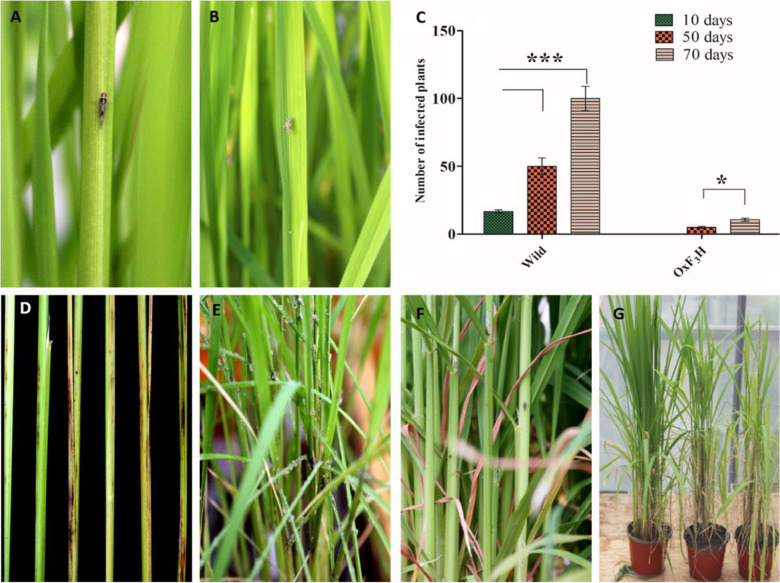Figure 1.
Phenotypic responses of transgenic and wild type rice seedling towards WBPH infestation. (A,B) represents WBPH attacking site as usually they feeds on stem and leaf midrib due to its sap sucking nature. (C) Indicates graphical representation of the number of infected transgenic and wild plants after different time points. (D) Lesion length of WBPH infection, the first two stem in left side of the picture shows transgenic plants which shows a minute infection while the rest of four shows wild type infected stem which were badly infected by WBPH, picture taken at later stage of stem development. (E,F) Wild and transgenic plants respectively which shows the density of WBPH in wild and transgenic line, wild type (E) was favorite for WBPH due to huge population present in it and also a huge number of first instar were found in wild type however only a few number of adult WBPH were found in transgenic line (F). (F) Indicates the effect of continues feeding of WBPH throughout the developmental stages on plant length, first plant of the picture (G) at left side indicate transgenic plant while the remaining two plants are wild type which are shorter than transgenic and this feature predicts that due to continuous feeding of WBPH causes dwarfism.

